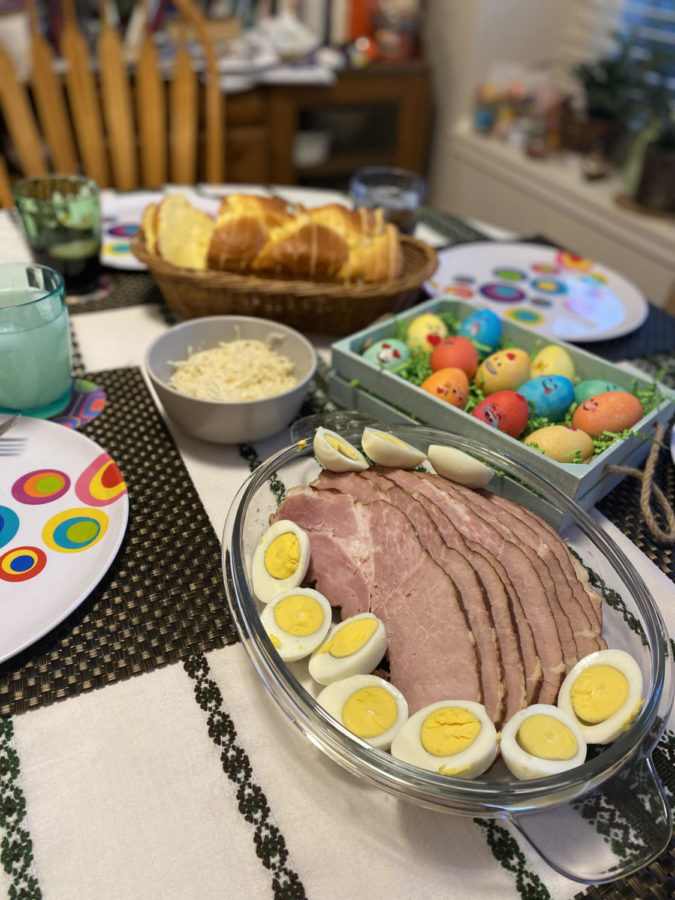Easter Around the World
A Retrospective Look at Easter Customs Across the Globe
Easter, or Pascha, is a Christian holiday that takes place in the spring, typically around March or April. It is a celebration of the revival of Jesus after his crucifixion. Throughout the years, different customs and traditions have developed in places around the world, giving it profound uniquety.
The origin of the holiday dates back centuries, beginning after the Resurrection of Jesus Christ on the third day after his burial following his crucifixion, as it is written in the New Testament of the Christian Bible. The exact date of celebration isn’t concrete due to multiple discrepancies regarding different calendars. Attempts have been made to unite under a fixed date, although none have come to fruition. It is thought that the name derives from Eostre, a pre-Christian Anglo-Saxon Goddess from England who was celebrated at the coming of springtime. However, there is very little evidence behind the theory, with the only known reference to the Spring Goddess from a text scribed by a British monk in the seventh or eighth century.
With the holiday spanning across 95 different countries, naturally, Easter has procured many unique customs across the world. Typical Easter celebrations include a grand feast, as well as attending services provided by churches Another popular tradition, egg painting, began in thirteenth century England. During Holy Week, a seven day period leading up to Easter Sunday, eating eggs was prohibited by the church. However, chickens continued to lay eggs over Holy Week, so, instead of eating them, the ‘Holy Week’ eggs were decorated. Since then, the decoration of eggs has become a staple of the holiday, and the egg itself even became somewhat of a symbol.
Chocolate rabbits originate from Germany, in the mid 19th century, and became exceedingly popular in the United States in 1890 when Robert Strohecker, a shopkeep, created a five-foot-tall chocolate bunny as an Easter promotion in his drug store. After the industrial revolution, chocolate became much more affordable, so parents were able to buy the chocolate rabbits, instead of paper ones filled with candy.
In Hungary and Poland, a tradition which takes place on the Monday following Easter Sunday is one where boys will chase girls in an attempt to soak them with water. The Monday after Easter has since gained monikers such as “Wet Monday” or “Ducking Monday”.
The residents of Haux, France, have a tradition of making a gigantic omelet made of over 4,500 eggs, feeding up to 1,000 people each year. The custom began when Napoleon and his men, who’d been traveling through the area, stopped to eat omelets.
In Bermuda, annual kite flying competitions are held around Horseshoe Bay Beach on Good Friday, and spectators are encouraged to visit the spectacle as home made kites are flown in the open sky. Competitions are held with multiple categories, including ‘best traditional kite,’ and ‘most innovative design,’ among others.
In Australia, it’s common practice to make Easter “bilbies” instead of Easter “bunnies.”Since rabbits are considered pests, Australians instead make chocolate bilbies, an endangered species of marsupial native to Australia. Proceeds go to helping the endangered animals.
The White House Easter Egg Roll is an annual event held on the lawn of the White House in Washington D.C. A group of children had seen President Rutherford Hayes walking down the street, and proposed the idea of the Egg Roll to him. The President loved it, and initiated the event in April of 1878. Children gathered on Capitol Hill in order to compete in an egg rolling race. Contestants wielded large spoons in an attempt to roll an egg down the hill. The event has taken place yearly since, however, it has changed locations to the south lawn of the White House, after concerns expressed by politicians, as the activities had a noticeable impact on the grounds of the Capitol building.
Communities in Ethiopia hold a 56 day fast, where no meat or dairy products are consumed. On Sunday, partakers dress up in completely white and hold a great feast called Doro Wot, and the feast consists of spicy chicken stew, Injera bread, and honey wine.
The list of traditions goes on and on, all unique with their own spins, origins, and connections to their respective culture and identity. From the Americas to Australia, it’s neat to see how celebration for one holiday has branched out into so many different and equally interesting customs that have developed along the way.



